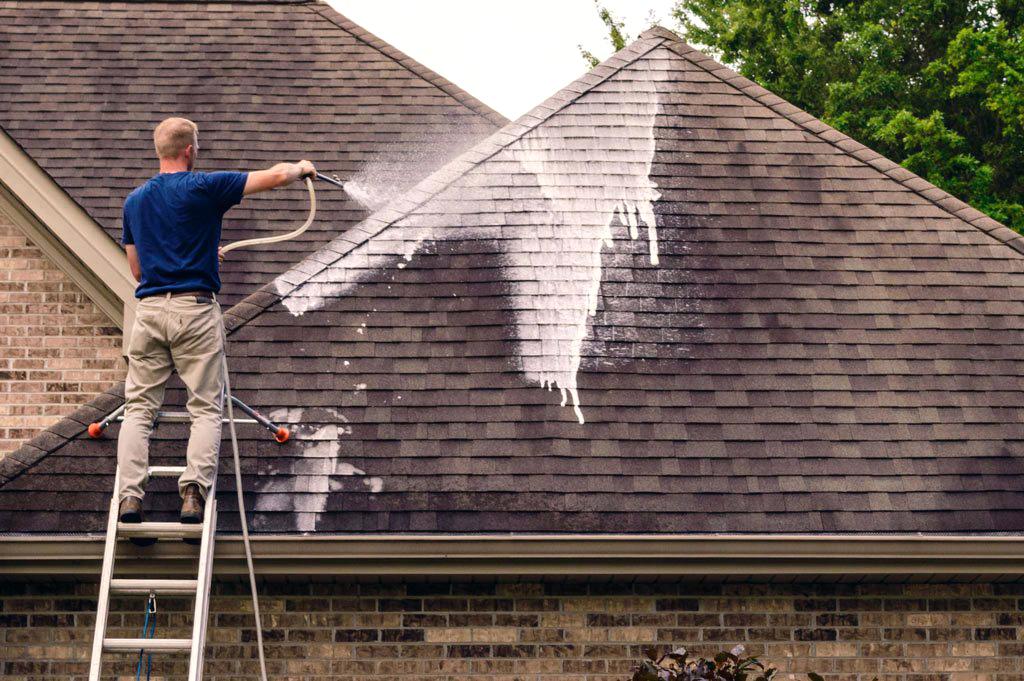Are you ready to weather the storm? As the monsoons approach, it’s crucial to ensure that your roof is in optimal condition to withstand the heavy rains and strong winds that lie ahead. Your roof is your first defense against the elements, and proper maintenance is key to keeping your home safe and dry.
It is essential to understand the importance of a well-maintained roof, as even minor issues can quickly escalate into major problems during a storm. Leaks, water damage, and structural issues are common concerns that can lead to expensive repairs and disruptions to your daily life. That’s why it’s essential to take proactive measures to protect your roof and ensure its longevity.
Following these expert recommendations will enable you to tackle any potential issues and keep your home secure.
1. Clear Gutters and Downspouts
Properly functioning gutters protect your roof and foundation from water damage. They effectively redirect rainwater away, preventing potential leaks and structural issues. However, during dry seasons, debris like leaves, twigs, and dirt can accumulate in your gutters, obstructing the smooth flow of water. It can lead to overflowing gutters, water pooling near the foundation, and even roof damage.
According to Forbes, proper maintenance of gutters is essential to ensure effective water drainage. To maintain your roof in top condition and prevent blockages or damage, it’s crucial to conduct regular inspections of the roof overhangs and gutters. Performing annual gutter cleaning can significantly extend the lifespan of your roof.
It’s worth noting that malfunctioning gutters and downspouts can contribute to moisture-related issues in basements and crawl spaces. Correctly positioning the downspouts will help redirect water away from these areas.
Don’t forget to check the downspouts for blockages that hinder water flow. Use a hose to flush out debris and ensure water can freely pass through the downspouts.
2. Inspect and Repair Roof Shingles
Your roof shingles are the initial layer of protection against the harsh elements of the monsoon season. According to National Black Guide, if you spot any damaged or missing shingles early on, it’s always less expensive to reinforce the roof’s weak spot by replacing the missing or damaged shingles.
When not done on time, they could result in more extensive and expensive damage. Therefore, regular roof maintenance prevents costly issues from developing in the future.
To ensure their effectiveness, it’s essential to inspect and repair any damaged or missing shingles. If you notice any issues, it’s crucial to address them promptly.
Grab a ladder and carefully climb the roof to get a closer look. Pay attention to areas where shingles meet flashing, as these joints are particularly vulnerable to leaks. Check for any loose or dislodged shingles and gently press them back into place. If you come across severely damaged or missing shingles, it’s best to replace them to maintain the integrity of your roof.
3. Ensure Proper Roof Washing
Soft roof washing is a crucial step to consider when preparing your roof for the monsoon season. As time goes by, various elements like dirt, algae, moss, and debris can accumulate on your roof, compromising both its visual appeal and functionality. Roof washing provides a safe and efficient approach to cleaning and rejuvenating your roof, safeguarding its structural integrity and restoring its aesthetic appeal.
Soft roof washing involves using a low-pressure water system or a specially formulated cleaning solution to remove dirt and organic growth from your roof. It’s crucial to note that high-pressure washing can damage your roof shingles, so opt for the gentle approach instead.
According to Lucid Drone Technologies, roof cleaning can also be done with the help of drones and their application. Drones can quickly and efficiently clean a sizable portion of the roof. For instance, in less than a minute, it can clean an area of up to 300 square feet. Therefore, if your roof is 1,500 square feet, a drone can clean the entire roof in only five minutes.
Drones may also significantly increase the worker’s productivity, effectiveness, and safety who are involved when cleaning soft wash roofs. There will be no need for ladders, safety harnesses, or lifeline ropes for your employees. Drones can quickly and efficiently clean a sizable portion of the roof while controlling the drones from the ground.

4. Trim Overhanging Branches
When protecting your roof during the monsoon season, don’t overlook the importance of trimming overhanging branches. During storms, trees in close proximity to your home can present a substantial risk. Strong winds have the potential to snap branches, posing a threat to your roof and causing damage.
Therefore, it is essential to adopt proactive measures to mitigate these hazards and ensure the safety of your property.
Start by inspecting the trees surrounding your house. Identify any branches that hang over your roof or are near it. These branches can scrape against the roof during storms, leading to shingle damage, punctures, or even structural issues. Trimming any overhanging branches to a safe distance from your roof is recommended.
5. Check and Maintain Flashing
Flashing is a vital component of your roof, ensuring proper sealing and waterproofing at critical joints and transitions. It is specifically designed to create a watertight barrier at areas where the roof intersects with features like vents, chimneys, or skylights. It acts as a protective barrier against water intrusion and plays a vital role in preventing leaks.
Repairing or maintaining flashing often involves resealing or replacing damaged sections. You can use roofing cement or caulk to seal small cracks or gaps. For more extensive damage or deteriorated flashing, it’s advisable to seek the help of specialists to ensure proper installation and a watertight seal.
6. Conduct Regular Roof Inspections
According to NRCIA, the type of roofing material chosen affects how long a roof will last. With the right material of asphalt, wood shingles or shakes, and composite can last 12 to 25 years. Therefore, to ensure long-term health and durability and increase the material’s lifetime on your roof, it’s crucial to conduct regular inspections, especially before the monsoon season arrives.
Regular roof inspections are crucial in detecting and resolving any underlying issues before they worsen and lead to significant damage. Addressing these issues promptly not only prevents further damage but also helps you save valuable time and money in the long term.
To begin, conduct a visual inspection of your roof from the ground, searching for any noticeable indications of damage or wear. Pay close attention to missing or damaged shingles, loose flashing, or areas where water might accumulate. Additionally, it’s crucial to thoroughly examine the attic for any signs of leaks, such as water stains or the presence of mold.
For a more thorough inspection, consider hiring a specialist roofing contractor. They have the expertise to identify hidden issues that may not be apparent to an untrained eye.
Secure Your Home With Regular Roof Maintenance
By implementing the expert roof maintenance tips discussed, you can safeguard your home. Your roof is crucial for protecting your home from weather conditions. Regularly maintain your roof to ensure its strength and durability. By taking care of your roof now, you can prevent expensive repairs and future problems.
As the monsoon season approaches, don’t delay implementing these essential maintenance measures. Your efforts will ensure that your roof remains a reliable shield, keeping your family safe and dry during the heavy rains and strong winds of the monsoon season.






